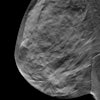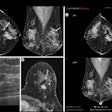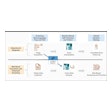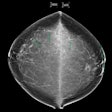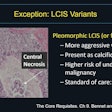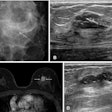Is the New York Times waging a crusade against mammography? That’s what many radiologists are wondering after the newspaper this week published yet another negative series on breast imaging.
In "Spotting Breast Cancer: Doctors are Weak Link," radiologists were chastised for a host of transgressions, including improper training in mammographic reading and an unwillingness to have their practices monitored. The article also pointed out what it claimed was the failure of the U.S. government to police the breast imaging community under the Mammography Quality Standards Act (MQSA).
Dr. Daniel Kopans, director of breast imaging at Massachusetts General Hospital in Boston, said he perceived a bias on the part of the Times against mammography. Most notably, the paper earlier this year ran a lengthy interview with Dr. Peter Gotzsche of the Cochrane Institute, one of the co-authors of a paper in The Lancet that questioned the effectiveness of mammographic screening (NYT, April 9, 2002). Such "misinformation" can only further confuse patients and referring physicians, Kopans added.
"One has to ask why the New York Times has launched a crusade against mammography," Kopans wrote in an e-mail to AuntMinnie.com. "The Times has just spent the past six months repeatedly telling women, based on the incorrect analysis of two individuals, that mammographic screening is of no benefit."
"Now the paper has published an article contradicting its position by implying that mammography works, but suggesting that radiologists don’t know how to interpret the examinations. The article is a compilation of anecdotes and brief summaries of complex publications that does not provide a great deal of evidence to substantiate the charges against radiologists," he added.
The article also claimed that "the vast majority of doctors reading breast x-rays are general radiologists who at most took a medical school rotation in mammography," a statement that many perceive as unfair, if not outright incorrect.
"At the University of Michigan, we have 10 radiologists specializing in breast imaging. Each of them has had additional training in mammography after completion of their residency training program, and (each) continues to learn through specific CME programs in breast radiology," said Dr. Reed Dunnick, president of the American Roentgen Ray Society of Leesburg, VA. Dunnick also serves as the chair of the department of radiology at the university in Ann Arbor.
University of Michigan breast specialists average more than 3,000 mammograms each year and attend regular breast imaging conferences at the university’s medical center to improve their interpretation skills, Dunnick added.
The American College of Radiology of Reston, VA, also came under fire in the article for allegedly being lenient on mammographers, giving facilities too much leeway to meet quality standards.
In an interview that will air tonight on "NOW with Bill Moyers" on PBS, Pamela Wilcox, assistant director of the ACR, points out that a time and money crunch are the main reasons for the mammography crisis, rather than lackadaisical monitoring. She noted that 675 healthcare facilities have closed their doors in the past year, 40% of them for financial reasons.
A second New York Times article, published today, chronicles the efforts of a Denver-based mammographer to reduce the error rate at his breast imaging facility. Two years ago, chief radiologist Dr. Kim Adcock at Kaiser Permanente Colorado began keeping score of his radiologists’ failure rates to catch breast cancers. While the institution improved its accuracy rate overall, Adcock himself gave up reading mammograms because his own accuracy rate was slipping (NYT, June 28, 2002).
Abandoning mammography
Unlike Adcock, many radiologists are abandoning mammography for less personal reasons, such as paltry reimbursement rates, difficulty in obtaining malpractice insurance, and the constant threat of lawsuits. Others aren’t even bothering to consider breast imaging at all. A recent survey by researchers at the University of California, Los Angeles found that an overwhelming number of residents at that institution showed little or no interest in specializing in breast imaging.
New technological advances, such as digital mammography and computer-aided detection (CAD), could increase cancer detection rates, but the New York Times series barely touched on these developments.
"Sophisticated algorithms are being designed to distinguish an abnormal breast mass from
normal breast tissue and to determine the likelihood of that mass being malignant," Dunnick said.
Full-field digital mammography (FFDM) continues to gain ground as breast imaging specialists grow more familiar with the technology. Some studies have put the sensitivity of FFDM as high as 100%. In addition, mammographers are reporting faster throughput with FFDM, as well as higher productivity.
As with FFDM, early studies on the value of CAD are promising: In a paper presented at the 2002 European of Congress of Radiology, working with CAD increased a radiologist’s sensitivity to 91.4% and translated into thousands of extra cancers detected.
Improvements in mammography services are vital, as demand in the U.S. is on the rise: Between 1998 and 2000, the total number of mammograms provided to women 40 and older rose nearly 15%, and those numbers are expected to climb. Ideally, specially trained mammographers would provide these services at carefully monitored facilities. But articles such as the New York Times series may wind up thwarting that goal.
"I agree with the article that the best work is likely to be done at centers where the radiologists are specializing in breast imaging, and have had additional training beyond a radiology residency," Dunnick said. "Unfortunately, I am afraid that this (New York Times) article may only discourage radiology residents from wanting to do mammography, and (may) further contribute to the shortage of well-trained physicians doing this work."
Based on postings on the AuntMinnie.com discussion board, the flight from mammography is already underway.
"It is very telling that mammography is the only area that we have no turf issues in," one post states. "It is my personal goal to stop reading mammography."
By Shalmali Pal
AuntMinnie.com staff writer
June 28, 2002
Related Reading
More cancer screening linked to earlier detection, May 9, 2002
Residents shy away from breast imaging, survey shows, April 15, 2002
For ease of use, FFDM wins points with RTs, April 5, 2002
Lancet study reiterates benefits of breast cancer screening, March 15, 2002
CAD technology begins to make good on its promise, March 14, 2002
ECR studies explore CAD in breast screening, March 1, 2002
With experience, readers prefer full-field digital mammo, November 26, 2001
Full-field digital mammography compares well to screen-film, November 11, 2000
Copyright © 2002 AuntMinnie.com
